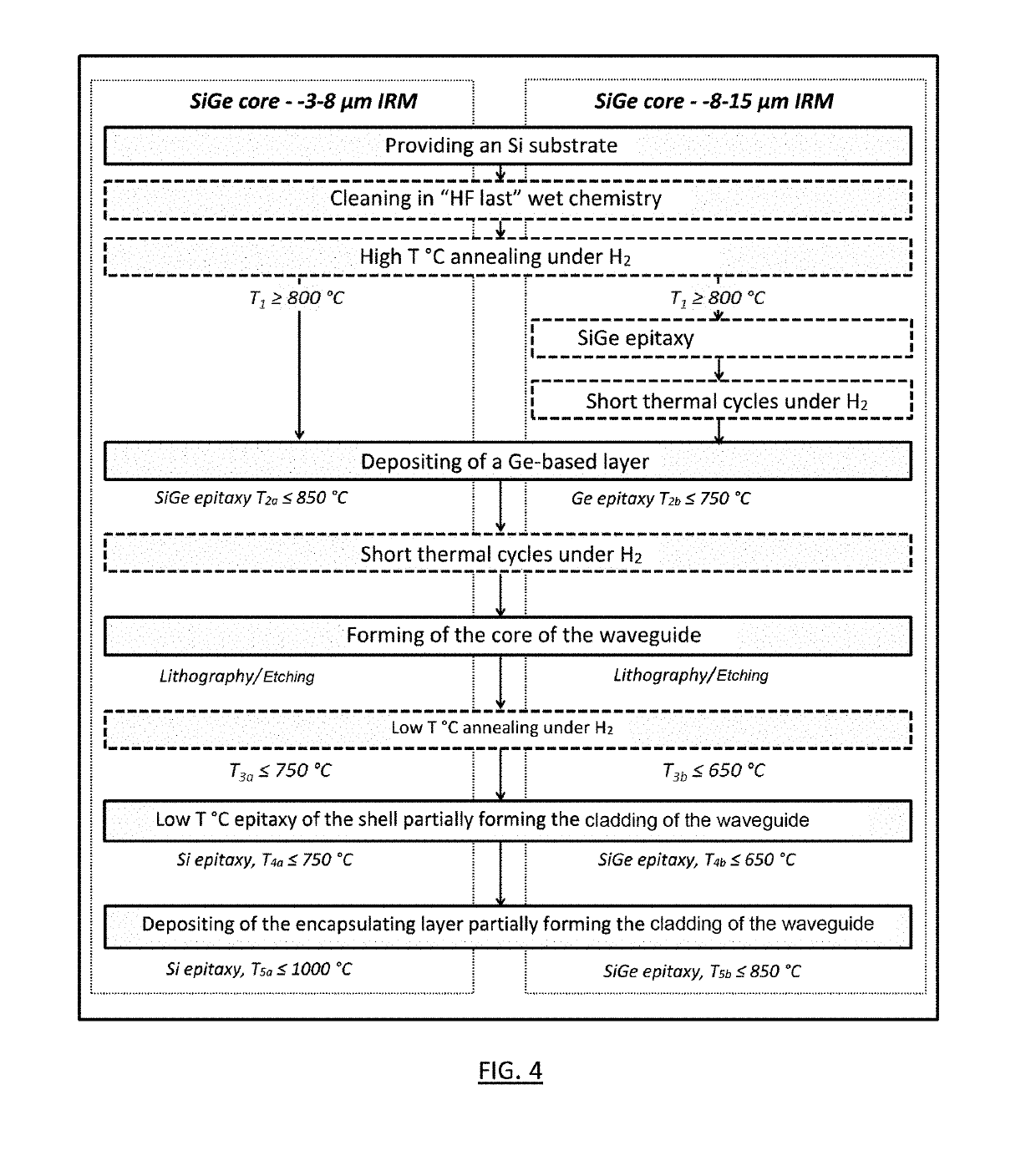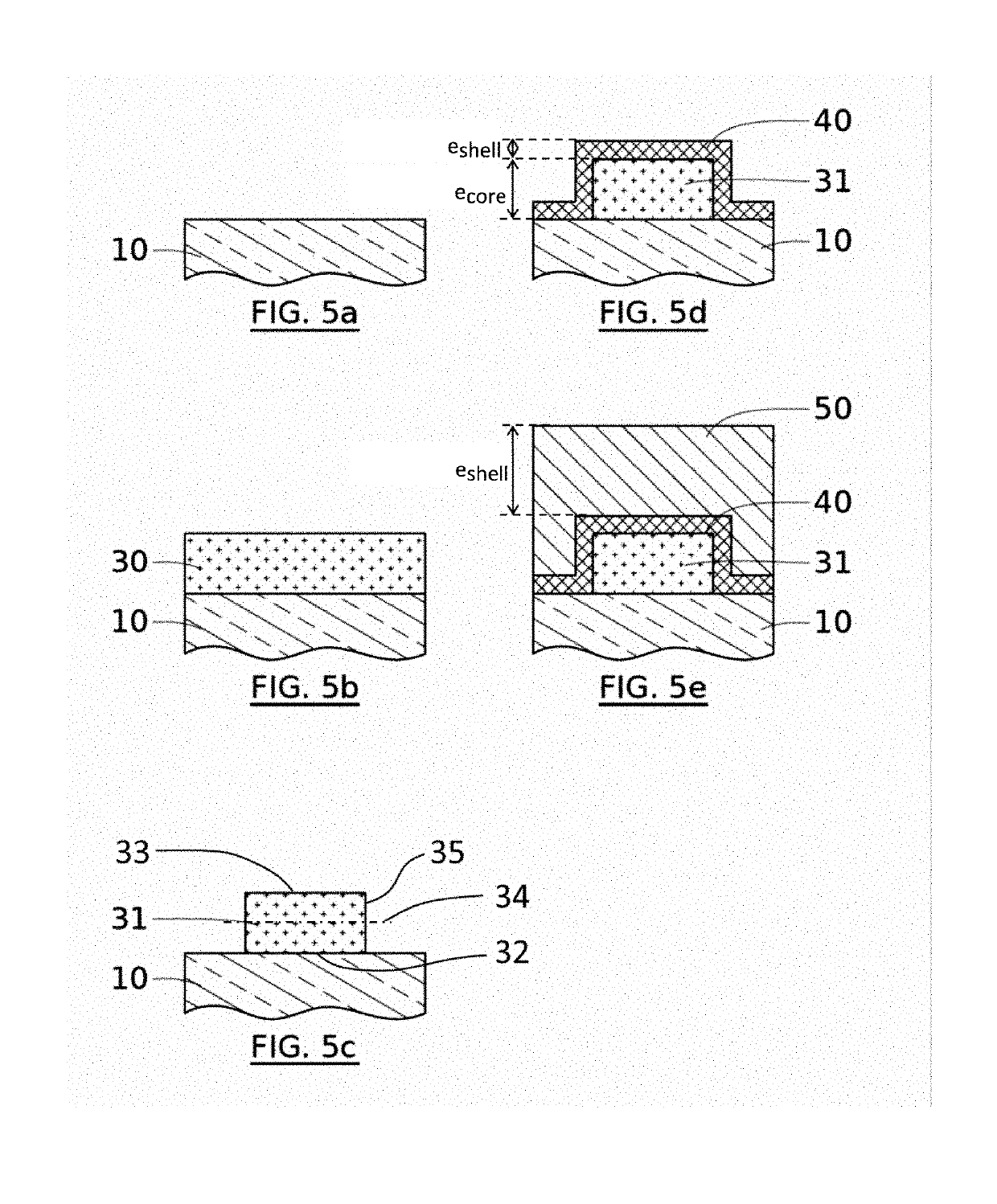Method for producing ge-core based waveguides
a technology of waveguides and ge-cores, applied in the field of methods, to achieve the effects of increasing the deposition speed of cladding materials, high atom mobility, and increasing the depositing speed
- Summary
- Abstract
- Description
- Claims
- Application Information
AI Technical Summary
Benefits of technology
Problems solved by technology
Method used
Image
Examples
Embodiment Construction
[0054]Before starting a detailed review of the embodiments of the invention, optional characteristics are stated below which can possibly be used in association or alternatively:
According to a particularly advantageous embodiment for producing waveguides optimized for light fluxes having wavelengths of between 3 μm and 8 μm (3-8 μm IRM band), the method can comprise the optional characteristics which can possibly be used in association or alternatively:[0055]the Ge-based layer is a silicon-germanium (SiGe) layer.[0056]the Ge-based layer has a thickness ecore of between 1 and 4 μm, the thickness ecore being determined along a direction perpendicular to the main plane wherein the substrate extends.[0057]the Ge-based layer has a substantially constant germanium content along the thickness ecore and is between 20% and 50%.[0058]alternatively to the preceding characteristic, the Ge-based layer has a varying germanium content along a direction perpendicular to the main plane wherein the s...
PUM
| Property | Measurement | Unit |
|---|---|---|
| thickness | aaaaa | aaaaa |
| thickness | aaaaa | aaaaa |
| thickness | aaaaa | aaaaa |
Abstract
Description
Claims
Application Information
 Login to View More
Login to View More - R&D
- Intellectual Property
- Life Sciences
- Materials
- Tech Scout
- Unparalleled Data Quality
- Higher Quality Content
- 60% Fewer Hallucinations
Browse by: Latest US Patents, China's latest patents, Technical Efficacy Thesaurus, Application Domain, Technology Topic, Popular Technical Reports.
© 2025 PatSnap. All rights reserved.Legal|Privacy policy|Modern Slavery Act Transparency Statement|Sitemap|About US| Contact US: help@patsnap.com



